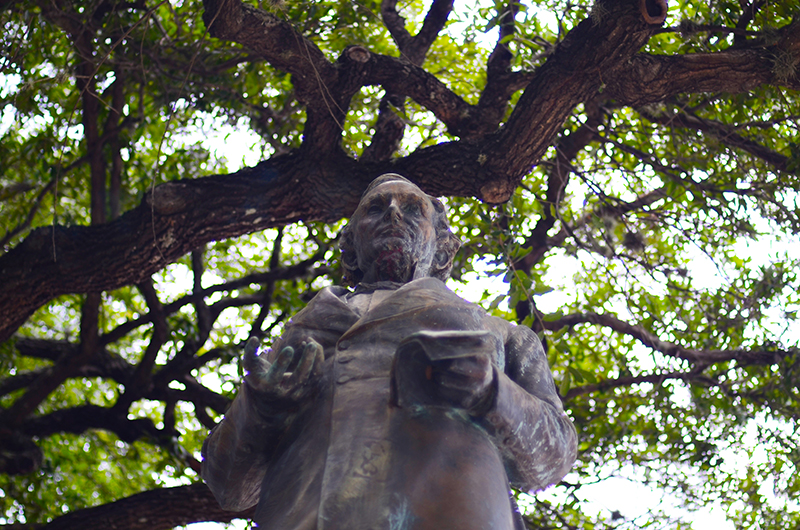After months of eager anticipation, UT President Gregory Fenves finally made a decision about the statue of Jefferson Davis on the Main Mall. The statue, depicting and honoring the only president of the Confederate States of America, will be relocated to the Dolph Briscoe Center for American History.
The Jefferson Davis statue has been plagued by controversy throughout its history, with incidents of vandalism beginning as early the 1940s and continuing through its time on the Main Mall. Fenves’ decision to relocate the statue to the Briscoe Center ensures that the statue will no longer be a public monument to a man who staked his legacy on the institution of slavery. Instead, it will be an invaluable part of our state's history from which students can learn its difficult lessons in the appropriate context of a teaching museum.
This decision is undoubtedly the right one. Members of this board have long been wary of Fenves making a decision based on the whims of public opinion, so we are thrilled to see no mention of it in his report. Instead, he rightly focused upon making a moral decision about a timeless issue: How communities — especially those of the University — confront shameful artifacts from our past, root out present-day prejudices and find long-term solutions for an improved future. In this regard, Fenves chose the option best suited for Longhorns past, present and future.
Fenves’ decision and quick action following the task force's report on Monday is certainly praiseworthy. But credit must also be given to Student Government President Xavier Rotnofsky and Vice President Rohit Mandalapu, who have long fought to accomplish this honorable goal. Without their initiative, and the impassioned involvement of students across campus through each part of this controversy, this day may never have come.
As the task force wrote in its report on the statuary: “The Confederate statues, therefore, are not only symbols of a now largely controversial neo-Confederate past; they are also powerful symbols of how that past continues to structure the present.” The Jefferson Davis statue may no longer be able to shape campus ideals in the way it was wrongfully allowed to in the past, but students should not let campus transformation end here. Now it is time for students to join our university’s leaders by showing the kind of resolve that will transform the physical landscape of this campus and, hopefully, its cultural one as well.
Prejudice and bigotry will continue to haunt campus regardless of the Jefferson Davis statue’s removal. The student body, which willed this movement to succeed through active engagement and participation in campus debates, should then take this opportunity to make conscious steps to identify and eliminate harmful overtones in an imperfect student culture. We do not have to know what that looks like today; but we do have to capitalize on our successes and begin anew tomorrow.
While moving one statue will not be a panacea for solving racial problems on UT's campus, it is an excellent — and remarkably easy — place to start. Students should choose a less easy place to start tomorrow. Doing so would demonstrate that one unified effort may spark a movement that can transform a campus exceeding 50,000 students and create lasting progress — if only we choose to make it. This should have been done a long time ago, but we're still happy it has happened today. Now, what about tomorrow?
















